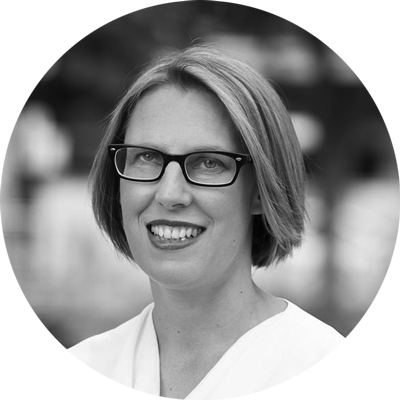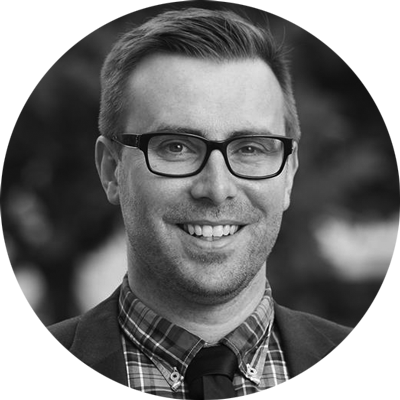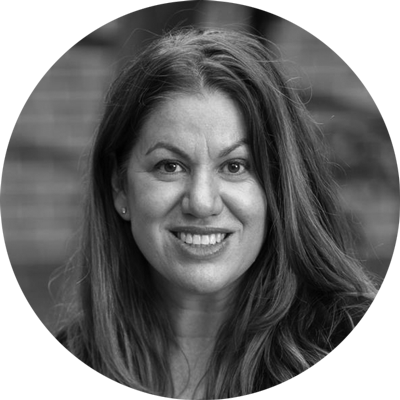Article Lead In
10 November 2022
AUTHOR: ADAM JOYCE
Trigger warning: this article discusses child abuse and neglect and may be distressing to some readers
> BREAKOUT STORY: Breaking the cycle
Recent cases of alleged neglect have again thrown the child protection system into the spotlight. Leading child protection researchers say it’s time for a new approach, where holistic support agencies work in partnership with families and communities to break the intergenerational cycle of harm.
Two children are allegedly stabbed by their mother. A six-year-old dies after being found unresponsive in her northern suburbs home. These are news stories that shocked South Australians earlier this year and yet they seem disturbingly familiar.
Back in 2012, four-year-old Adelaide child Chloe Valentine died after being forced to ride a motorbike that she repeatedly crashed while her mother and partner filmed the horrific scene. Chloe was the subject of more than 20 notifications to the relevant government agency from people concerned for her welfare.
In 2016, Margaret Nyland handed down a royal commission report into the child protection system revealing a system overwhelmed by the volume and complexity of work, “with notifications received every day relating to children living in dire circumstances who desperately need someone to take action on their behalf”.
“In many cases, the response comes so late that there is little choice to do anything other than to remove the child from their family,” Nyland wrote.
In recent cases, it’s been stated that families have had multiple interactions with government agencies.
Premier Peter Malinauskas this month released the recommendations of a review by former police commissioner Mal Hyde, which suggested ways to improve the way government agencies work with at-risk families.

While it’s easy to assume not much has improved in the years since Chloe's death, one of Australia’s foremost children protection experts, Professor Leah Bromfield, says there have been numerous advances in the field.
“I've been doing this work for more than 20 years now and in that time there's a whole lot of things that we've gotten better at – understanding of: how abuse occurs; grooming; the impacts of abuse and neglect; how the justice system should work with child witnesses; and community understandings of abuse and neglect.
“But we are such a new field – really, the science around child abuse and neglect and child protection started in the 1960s and the systems we have now are basically the systems we put in place in the 60s.”
Professor Bromfield, who leads the Australian Centre for Children Protection (ACCP) at UniSA, says the key issue is that current child protection systems are based on outdated assumptions.
“Our systems were designed initially on the idea that child abuse and neglect was a small problem. We've come so far and we've improved so much in our responses to child abuse and neglect, but our systems are still not good enough for our kids and as a consequence, children are falling through the cracks.”
Research has improved understanding of child abuse and expanded from a previously narrow concept with a focus on “battered child syndrome” and sexual abuse to also encompass the damaging impacts of neglect, emotional abuse and exposure to domestic violence.
A recent study found 89 per cent of young people who had used family violence reported experiencing child abuse (witnessing violence between other family members, and being directly subjected to abuse). Young people who had both witnessed violence between other family members, and had been directly subjected to abuse, were more than nine times more likely to use violence in the home than respondents who hadn’t experienced any child abuse.
It was previously thought that fairly “light touch early intervention” with at-risk families, such as access to a relevant support service, could prevent the majority of child abuse.
The theory is that you nip that problem in the bud to prevent escalation.
But the reality of most families in need is far more complex and often intergenerational – not a newly emerging issue in a single generation.
“In the past, because of our assumptions around first generation, incremental risk and trying to get in early, we had assumed that when there were lots of calls to child protection, that mandatory reporters and community members were being hypervigilant,” Prof Bromfield says. “There was a myth that people were reporting about Mars Bars in lunch boxes.”
The burgeoning number of cases
In a research project, the ACCP went through more than 12,000 mandatory notification reports made in South Australia and found that there was objectively measurable risk in almost all cases.
“So they [mandatory notifiers] were getting it right and what we found was that most of those families were being reported multiple times for multiple children in households with large family sizes,” Prof Bromfield says.
“And we found that the risk was intergenerational, so our babies were being conceived into families with multiple and complex needs.
“What we need is intensive therapeutic services to disrupt that intergenerational cycle.
“Child protection has excellent intelligence about families. I don't think we have a problem in a lack of reporting … we have a lack of effective responding.”
In South Australia, one in three children is reported to child protection by age 18.

Social researcher Dr James Hebert says the scale and complexity of the problem, combined with the mismatch with how child protection systems operate, is huge.
“The volume of information of reports that are coming in and the capacity to be able to respond to those is completely mismatched,” he says.
Dr Herbert, who is a Senior Research Fellow at the ACCP, says the community-based agencies funded to work with at risk families are generally not well equipped to deal with the complexity of their needs.
“Sometimes even professionals are boggled by the different eligibility requirements for services, the waitlists and things like that,” he says, "never mind, the children and families themselves."
“The prevalence of homelessness, housing issues, drug and alcohol addiction and domestic violence, means we need the ability to bring services to children and families, and for this to be coordinated, rather than shoving people onto waiting lists and relying on referrals and waitlists.”
The complex and interrelated needs of families at risk

Deputy Director of Research at the Australian Centre for Child Protection, Associate Professor Melissa O'Donnell, agrees the health and care systems are inadequate in responding to the complexities of families at risk.
Issues include family domestic violence, mental health concerns, substance use, housing instability and homelessness – needs that span multiple government agencies including health, education, housing and police.
“That's one of the real barriers for families – when families have needs, they don't fit perfectly in each government department’s portfolio. It would be unrealistic to expect a family to go to six different services to try to meet their needs when they're obviously going through crisis and adversity,” Assoc Prof O'Donnell says.
“We need to do better in terms of working more closely with families to look at how we can address their needs … that would go a long way to supporting families to not fall through the gap.”
Assoc Prof O’Donnell says although some families are being repeatedly reported for child protection concerns, the sheer volume of notifications means most are unlikely to get the support they need.
“The threshold for actually contacting and working with the family is now so high, which is a real shame because it doesn't allow the family to get the support they need early on when the risks are lower,” she says.
“So I think it’s a catch 22. They [child protection] don't have the resources to meet the needs of families in the early stages, so therefore there's increasing reports.”
This means by the time child protection services are involved, it’s often reached the stage where “the response is about whether we remove or don’t remove a child rather than how we can support the families to address the safety concerns”.
“If we have to take that action to put children into care, that costs the government a lot of money. Whereas those resources, if they had been provided early on, would have actually supported families at lower levels of risk where we can engage with them and ensure safety early on," Assoc Prof O’Donnell says.
But it’s not just about funding and resources, it’s about how those resources are provided. There’s a lack of the required coordination between mental health, drug and alcohol services, family domestic violence, housing and homeless services.
“Most of the families we’re seeing have a combination of those issues and it's unrealistic for us to expect that family to seek those out and attend all those different services separately, particularly if they're going through crisis.”
Prof Bromfield says the key is to provide holistic services to families.
“You might have three or four services just for your own health needs plus three or four services for each of your kids,” she says. “Some of the real strength we see is where programs are looking holistically at their clients.
“Otherwise, you’re spending all of your life trying to coordinate appointments, trying to get you or your family members to those appointments – you might not have a reliable car. So, if we can design services that wrap around the family, we can service that family network.
“But if you have a have the model we've got now where it's up to the individual to try and navigate that complex service system – and they have no control over the sequence of when they get the services, we end up with a hodgepodge. It's a jigsaw puzzle where the pieces don't fit.
“If we put that responsibility on a family, that is bad design, that is not going to work, and then our families are going to fail, and when they fail, we're going to blame them and we're going to remove their kids. That's a predictable cycle.”
This means that between a child protection system designed for “light touch early intervention” at one end and a tertiary system that only gets involved when children are at high risk, “we're missing all these windows of intervention to actually break the intergenerational cycle in families with multiple complex needs”.
Assoc Prof O’Donnell says that in families where there is domestic violence, on average, children are exposed to this at age six. But on average, such children are not identified as requiring mental health support until age 12.
“We know that children exposed to family and domestic violence will have greater mental health concerns that need to be addressed,” Assoc Prof O’Donnell says.
“We can certainly reduce the number of families that fall through the cracks by ensuring that we create a safety and support network for them where the Department for Child Protection works fully in partnership with the family and with community service organisations to have a joined-up approaching to meeting the family’s needs.”
Despite stereotypes, she says most at-risk families have good intentions.
“When I actually talk to families on the ground and experiencing this, they show a lot of resilience, despite the adversity and challenges they’ve faced in life,” Assoc Prof O'Donnell says.
“Most of them just love their kids and just want better for their children. If we could improve the way we support those families, we could achieve greater safety and better outcomes.”
Lack of data to illustrate the scale of the problem
Dr Herbert says a large-scale population base prevalence study has never been undertaken in Australia to accurately determine the scale of the problem. The first is now underway.
“We tend to have to rely on the data fed back from police or from child protection agencies about how many reports there’ve been,” he says. “A key piece of this is to understand the problem before we start recommending solutions.”
Similarly, more research is needed to demonstrate which interventions work.
“The question, ‘Is what we're doing helping?’ doesn't get asked quite as much,” Dr Herbert says.
“The argument for more funding to solve some of these problems is really challenged by the difficulty in getting good data that shows if what they're doing is helping.
“Half the time we don't know what's being delivered, the other half we don't know what the effect has been.
“Because things are crisis-driven, child protection systems are doing things and sort of hoping for the best. But they're not getting the data where they could go to Treasury and say, 'Hey, we delivered X amount of services, we saw this amount of improvement.' If you could do that, Treasury would be able to see the return on investment in reducing the amount of trauma in the community and the flow-on effects. But we just don't have that data at the moment.”
The vexing question of whether to remove children from their parents
One of the most challenging decisions for child protection workers is whether to remove at-risk children from their families.
Workers must ensure children are protected from harm but also take into account a child’s own views, their need for love and ideally, the ability for them to maintain a connection with their family, as set out in the Children and Young People (Safety) Act.
“If they're exposed to family domestic violence, abuse or neglect, that will impact their development – so it's a complex interplay,” Assoc Prof Melissa O’Donnell says.
“The ultimate outcome is for child protection systems to work in partnership with families to address the safety concerns and address the family’s needs,” she says. “If that can’t be achieved in the short term, obviously removal from the family is an option … but the system should work with the family to see if there’s someone in the kinship network who can support the child, so they’re still connected to their community and their extended family.
“There are really good examples of this in the Aboriginal community where they have a large kinship network and family members often take responsibility while parents seek the support they need and try to address safety concerns.”
There’s also a higher proportion of children with disabilities in care, who need additional support.
“Many of these children have multiple placements, placement breakdowns and then the ongoing support they require following leaving care as well,” Assoc Prof O’Donnell says.
Young people leaving care are less likely to complete high school, and more likely to become parents at a younger age, have poorer health outcomes and experience homelessness.
“Most children in Australia now don't leave home until after 23 years of age, however, children in care can expect to leave at 18 with very little support offered following that. So there are multiple issues that need to be addressed in terms of improving outcomes for children in care.”
Prof Bromfield says child protection workers are often between a rock and a hard place in having to make the decision about whether to remove a child from their family.
“There are risk assessment tools that help workers in making that assessment but the circumstances of the family are so dynamic that it’s not like doing the math for when a bridge is going to collapse,” she says. “One thing in that household can completely tip the balance. So the ex-partner, who has just been released from gaol on parole, re-enters the household with an ice addiction and that completely changes any risk assessment.”
Research indicates children who are removed from their birth families are more likely to have poor life outcomes, including high rates of welfare dependency and involvement in the criminal justice system.
“We don't have enough places in care and we are not doing a good job where the state is parent,” Prof Bromfield says. “Those kids [who have been removed] equally end up in the newspapers – we’ve had some awful cases here in South Australia.
“Removal into out-of-home care is no magic bullet. We can't guarantee they're going to do better in care and that's why as researchers we say the optimal outcome would be if children could be somewhere where they were safe, with someone who loved them.”
It is often hard to find stable placements for children who have behavioural issues – a common impact of abuse – with such kids often ending up in residential care.
“In residential care, you have a professional team around the clock but that’s not someone who loves you and adult survivors will often talk about that sense of connection as being one of those real deciding factors in life.
“So if a child is loved in their family and we can provide that holistic wraparound support to ensure that the child is safe in their family, I would prefer that.”
Research has found maternal mental health, the impacts of colonisation on Aboriginal communities, young maternal age, and living in socially disadvantaged neighbourhoods are all associated with an increased likelihood of mental health events.
The director of the Australian Centre for Child Protection (ACCP) Professor Leah Bromfield says the scale of the problem of at-risk families is not obvious because it's concentrated in households with large family sizes.
“It's concentrated in particular streets, in particular communities, in particular suburbs. It’s not spread equally across the state,” Prof Bromfield says.
“The problem is intergenerational transmission; it is family, not one-to-one transmission – we see large family sizes with parenting starting very early. And it's growing with every generation of kids that we're failing.”
But there are opportunities to interrupt the cycle of trauma and child harm.
Work by the ACCP has shown that children with a parent who has been in care are much more likely themselves to be placed in care when compared with the general population.
The solution the system needs is to provide assistance to first-time mothers who were themselves involved with child protection services as a kid.
“We need to be throwing everything at supporting that young woman, providing treatment for her trauma, providing treatment for any substance addiction that she has as a consequence of her own childhood history of abuse and neglect,” Prof Bromfield says.
“We’re often finding our young women are already in relationships where there's violence present from that first pregnancy. There’s a window of opportunity to support them there.
“For that mum and bub, where we miss that window, the needs don't go away. They actually accumulate across their lifespan.”
Without support, five years later, that young mum is likely to still have a substance addiction, an unmanaged mental illness, and be in a violent relationship.
“But now she's got three kids under five, and each of those kids is already demonstrating impacts of being exposed to violence, to being exposed to neglect, and that’s harder work if we're intervening for that family,” Prof Bromfield says. “You need speech therapists and occupational therapists to help those kids for developmental delay, as well as those supports for mum.
"If you can support a first-time mother with a history of trauma, then you can change the lives of all of her prospective children and that shrinks the problem."
If kids who’ve been removed from their parents are provided “effective therapeutic treatment now to support them to heal from the trauma they've experienced, then we can stop them from becoming the at-risk adolescent” who goes on to have kids at a young age.
“We need to find those key windows to disrupt this cycle rather than thinking there's one cookie-cutter intervention for families with multiple and complex needs,” Prof Bromfield says.
If the problem can be broken down in this way, with wraparound support services provided to individuals and families tailored to their needs, then it could be the answer to making life better for children who may otherwise go on to repeat the patterns of their parents.
Key child protection inquiries
2003: The Report of the Review of Child Protection in South Australia (Layton Review) made a comprehensive series of recommendations for a complete overhaul of the system to keep children safe.
2008: Children in State Care Commission of Inquiry focused attention on the experiences of children who had been sexually abused or who died as a result of criminal conduct in state care.
2008: Children on Anangu Pitjantjatjara Yankunytjatjara (APY) Lands Commission of Inquiry focused on issues relating to Aboriginal children on the Lands.
2016: The Child Protection Systems Royal Commission recommended major reforms to the statutory agency responsible for the safety of children.
2022: The South Australian Government announces a full review of the Children and Young People (Safety) Act 2017.
The rate of notifications of suspected abuse and neglect is spiralling:

25 per cent of children born in 1999-2000 had been notified to the Department for Child Protection (DCP) by age ten

30 per cent of children born in 2001-2002 had been notified to DCP by age ten

40 per cent of children born in 2007-2008 had been notified to DCP by age ten

Notifications of abuse and neglect is now one in three children

In 2019/20 there were over 75,000 notifications regarding 39,000 children and over 20,000 families. Of these some 70 per cent were already known to DCP

One in five SA government social workers, who support families at risk of having their children taken into care, have quit over the past two years
Support Services
1800 Respect national helpline: 1800 737 732
Lifeline: 13 11 14
You can republish this article for free, online or in print, under a Creative Commons licence, provided you follow our guidelines.



